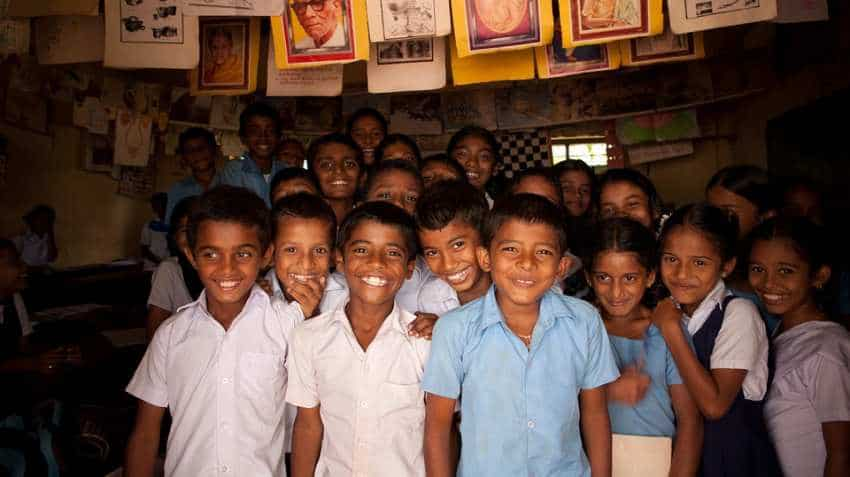How to invest for child education in India: Explore PPF+Fixed Deposit+Mutual Fund+Equities+NSC
Children's Day 2018: While the entire country celebrates Children's Day today, it is good time for you to plan for your child's education.Children's Day 2018: While the entire country celebrates Children's Day today on November 14, 2018, it is a good time for you to plan your child's education.

Children's Day 2018: While the entire country celebrates Children's Day today on November 14, 2018, it is a good time for you to plan your child's education. Starting from school level, rising costs are depriving dissemination of quality education to a large number of children across the country. The tuition fees for higher education is forcing thousands of students to take bank loans and fall in a debt trap in initial years of their careers. In past, parents used to sell property to fund children's education. It is happening still in many parts of the country. All of this can be avoided by little planning and disciplined investment in the initial years of the child's life.
Rahul Jain, Head, Personal Wealth Advisory, Edelweiss suggests an investment portfolio for your child’s education. He tells zeebiz.com that parents must consider investing in some of the following avenues in varying proportions so that they have a portfolio that is dedicated towards a child’s education. These investment schemes can actually help you save lakhs of rupees for you children as they grow up.
1. Children's Education and Mutual Funds
Saving money via mutual funds is one of the most convenient ways to build wealth for your child’s education. Mutual funds are particularly useful for saving money towards goals of varying frequencies.
The easiest and most investor-friendly method to invest in mutual funds are SIPs (systematic investment plans).
So, if parents are looking to save money for two years later when their child is ready for pre-school, they should set aside money in low-risk mutual funds like debt funds. For longer term goals (pursuit of medical / MBA), they should prefer equity funds. They can invest in tax-saving funds to attain the dual objective of securing a tax benefit (under Section 80C) and creating wealth. Read more about Mutual Fund
2. Children's Education and Investments in Equities Directly
Individuals who have the time and expertise for direct stock market investing, can save money for a child’s education via equity investing.
Equity investing is a long-term solution for wealth creation, which means parents must look at an investment horizon of at least 5 years. So, if there are any short-term education goals, direct equities are not the right avenue.
Parents looking to save for longer term goals like secondary schooling, private tuition or higher education, can consider direct stock market investing.
3. Children's Education and Fixed Deposits
Low-risk investors, who cannot stomach the risk of equity investing, can consider investing in fixed deposits (FDs). FDs are ideal for short-term to medium term goal planning (1-5 years) viz. pre-school, primary schooling. Read more about Fixed Deposit, Check latest FD rates
4. Children's Education and PPF, NSC
National Savings Certification (NSC) and PPF (Public Provident Fund) are other low-risk options for parents saving for child’s education. Given the lock-in, these investments are ideal for medium to long-term goals (secondary schooling, private tuition, and higher education). Read more about PPF, NSC
"Parents clearly have plenty of options when it comes to saving for child’s education. With careful planning they can build a portfolio with various investments designed to meet goals with different time frames," says Jain.
05:13 PM IST






 Equitas Small Finance Bank introduces Current Account with 'Sweep In Sweep Out’ Fixed Deposit
Equitas Small Finance Bank introduces Current Account with 'Sweep In Sweep Out’ Fixed Deposit Bank Fixed Deposit: FD investment, interest rates, and more, everything an investor must know to become wealthy
Bank Fixed Deposit: FD investment, interest rates, and more, everything an investor must know to become wealthy SBI fixed deposit rate vs Ujjivan Bank: This small lender offers attractive interest rates to account holders
SBI fixed deposit rate vs Ujjivan Bank: This small lender offers attractive interest rates to account holders It's not just Ujjivan IPO that is attractive, it's Fixed Deposit Rates are high too! Check now
It's not just Ujjivan IPO that is attractive, it's Fixed Deposit Rates are high too! Check now Become rich! Know how to make money the right way! Let Money Guru show you how; check list
Become rich! Know how to make money the right way! Let Money Guru show you how; check list